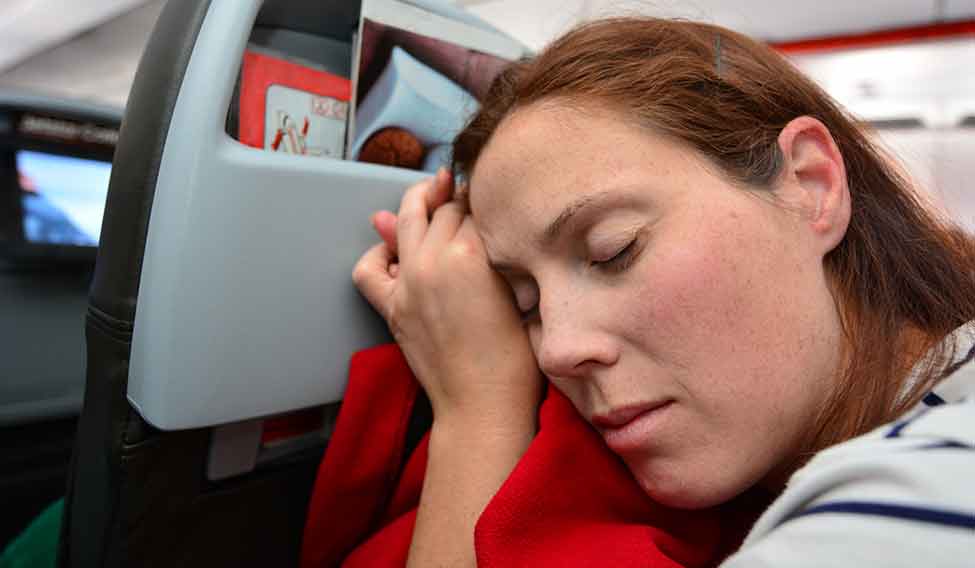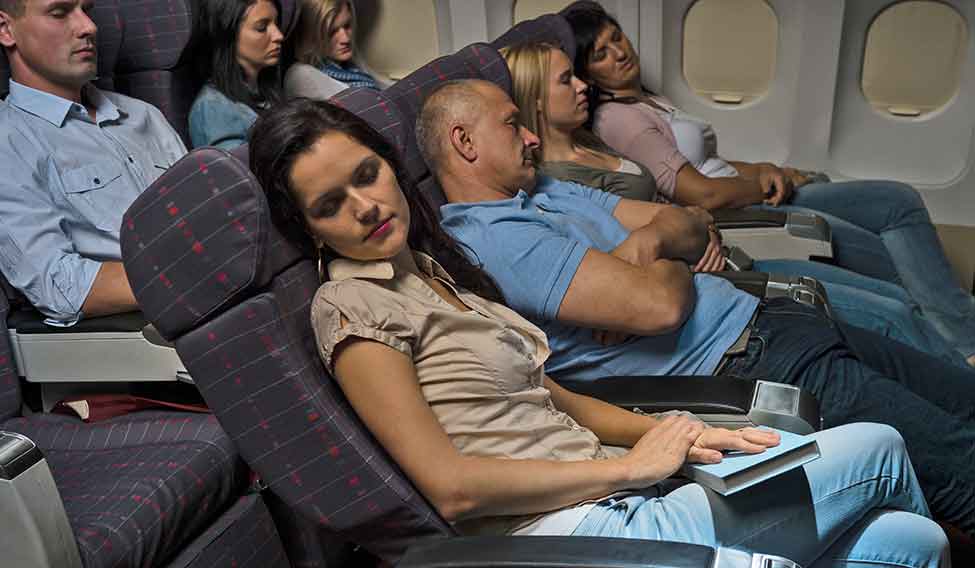SPLURGE ON YOUR SEAT
Let’s start with the most obvious one. Fly business class. Or better still, first class, says Dr Richard Dawood, a specialist in travel medicine. It is a nice option if you can afford it.
“Unfortunately, airlines recognise the high premium passengers place on being able to sleep in comfort while they travel,” says Dawood, the editor of Traveller's Health: How to stay healthy abroad. “They have turned the lie-flat, premium seat into almost an art form—but know that they can also charge premium fares for the privilege. Nonetheless, it is sensible to travel in the highest or most comfortable class that you can afford.”
Even if you cannot travel in a premium class, you may be able to pay a little more for a seat with extra leg room. Most airlines offer this option when booking.
PICK A QUIET SPOT
Research by easyJet revealed that the most in-demand seat on a plane is in 7F, near the front of the plane—presumably for the perceived ease of disembarkation. Those seeking peace and quiet may wish to avoid the front, however, as this is where parents with babies will often travel, and where flight attendants will be clattering around with drinks trolleys.
So consider the back of the aircraft. Window seats obviously reduce the chance of being disturbed and also give you somewhere to rest your head.
KEEP IT LOOSE—EXCEPT AROUND YOUR CALVES
If you are aiming to sleep, travel in comfortable, non-constricting clothing (apart from compression stockings). Wearing loose clothing will help you drift off and also prevent deep vein thrombosis (DVT) which occurs when your blood flow is restricted.
WHICH POSITION?
For those in first- or business-class, this is a no-brainer.
What about the rest of us? While there seems to be a minority that prefers to catch 40 winks while hunched over their seat-back tables, Dawood believes that the best position (controversially for those behind you) is to put your seat back as far as possible. “Recline as much as possible and make yourself as comfortable as conditions permit,” he says.
Sitting up straight also contributes to lower back pain, according to research for the British Chiropractic Association, which suggests that leaning slightly back at a 135 degree angle is best as the least pressure is placed on the spinal discs.
Movement of the discs was most likely in a 90-degree upright position, it added, making it the least safe, while the slouched, hunched-over position resulted in some wear and tear on the lowest spinal levels.
Other downsides for those who like to lean forward with their head resting against the back of the chair in front include the undue pressure on your neck, the likelihood of being woken by the movements of the chair in front, and the fact that “the slump” is possibly the least dignified position to be seen in.
There may be unoccupied seats on the flight that you can overflow into—consider asking cabin crew if you can move should you spot an empty row.
If you are lucky enough to have a free neighbouring seat, you can curl up foetal-style on your side, though forget about trying this if you’ve got long legs.
GET YOUR BUCKLE OUT
There is nothing more annoying than being on the verge of nodding off, only for a member of cabin crew to prod you, trying to find out whether you are buckled up. Keeping your seatbelt visible above your clothes before take off will prevent this.
BE IN NO MOOD TO CHAT
Politely deter your neighbour from engaging in mid-flight small talk by waving a book around, plugging in headphones, or muttering to yourself in an obscure foreign language.
DON’T DRINK TOO MUCH
While the soporific effects of booze are well known, Dawood suggests avoiding caffeine-laced drinks and alcohol on a flight. “Try drinking a herbal tea,” he recommends instead. “It is a good idea not to eat a full or heavy meal, too.”
Keeping hydrated will help you avoid waking with a dry mouth later thanks to the air conditioning and lip balm adds another preventative barrier. The cabin air in Dreamliners is more humid than on other planes, partly because they are made from composites and so less likely to rust due to humidity.
If you are worried about getting stuck in a queue for the toilets, it might be an idea to set an alarm to go off 30-45 minutes before you land to give yourself ample time and beat the rush.
DON’T WATCH TV
The light from the screens keeps your brain awake. “If the environment is noisy, try some relaxing music,” advises Dawood, “perhaps with noise-cancelling headphones. If it is very noisy, switch to something louder.”

TRY A PILLOW
Ideally, you should bring your own pillow. “My current favourite pillow is a Tempur,” says Dawood. Alternatively, if you want to start a trend, try one of these more unusual sleeping aides. The “ostrich” pillow, for example, is a good choice for narcoleptics everywhere, or the “elastic band” pillow—also guaranteed to cut dead conversation with your neighbour.
Alternatively, this BauBax multi-function jacket, dubbed the “world’s best travel jacket”, has a neck pillow attached, as well as an eye mask.
In the future we might well be using this, a “Transport Vehicle Upright Sleep Support System” which Boeing has patented.
It merges a cushion, a backpack and a pillow into a device which can support a passenger’s head and chest.
Sketches supporting the application, along with mock-ups produced by the website PatentYogi, demonstrate that it can be strapped to the head-rest at the back of a seat, allowing a traveller to lean forward and rest their weight against it in a bid to enjoy a little slumber on a long-haul service—with the cushion supporting the chest and a pillow (with a hole to leave space for breathing) taking care of the head and face.
IF ALL ELSE FAILS, POP A PILL
“Sleeping tablets can help overcome noise and discomfort,” says Dawood. But they should only be used on journeys that are long enough, and only if you can lie down flat.
“Sleeping deeply in a cramped, upright, seated position can significantly increase the risk of deep vein thrombosis, and should therefore be avoided. [If you really must do this, be sure to wear compression stockings.]
“Short-acting sleeping pills can be used to provide as little as four hours of sleep—but it is difficult to get more than four hours of uninterrupted sleep on anything shorter than a six-hour flight.
“Taking a longer-acting pill on a short flight can leave you feeling drowsy and disorientated, unable to act in a crisis, and with an impaired memory of events around the time of the flight. Discuss the best choice with your doctor or travel clinic.”
AND WHEN YOU ARRIVE… HOW TO COPE WITH JETLAG
The real challenge comes when you reach your destination. It may take several days to adjust to a new time zone.
Short-acting sleeping pills can then be used for a limited time, to help initiate sleep at a sensible local time when you are not feeling sleepy, and to help you get back to sleep when you wake during the middle of the “night”.






